Comments / Questions (51)
![]() Liv Kjellemyr Kostveit wrote:
Liv Kjellemyr Kostveit wrote:
Hei! Jeg har nå kommet til A.1 og skal felle ved merket i siden og 2 masker i starten av hver pinne. Skal det felles i siden på hver fjerde omgang som før, eller på hver omgang? Liv
15.09.2019 - 22:17
![]() CELINE wrote:
CELINE wrote:
Quand aurons nous les explications ? Remarquez je suis en train de tricoter le fjord rose que je veux déjà en faire un autre ... vos modèles et vos laines sont magnifiques. Merci à vous
15.09.2019 - 00:33DROPS Design answered:
Bonjour Céline, et merci; les explications de ce modèle sont déjà disponibles. Tous les modèles de la collection automne-hiver sélectionnés seront publiés d'ici au printemps 2020, merci pour votre fidélité, bon tricot!
16.09.2019 - 10:11
![]() Liv Kjellemyr Kostveit wrote:
Liv Kjellemyr Kostveit wrote:
Er det meningen at man skal øke når man strikker bolen? Når det kun skal felles 4 masker hver fjerde omgang, mens det økes 4 masker annen hver omgang, vil genseren øke nedover.
11.09.2019 - 22:12DROPS Design answered:
Hej Liv, Ja det er meningen - god fornøjelse :)
12.09.2019 - 10:21
![]() Anna wrote:
Anna wrote:
Es precioso! muy original y la combinación de colores atrevida y acertadísima! éste invierno lo luzco seguro!! Muchas gracias!
26.08.2019 - 16:25
![]() Helena wrote:
Helena wrote:
Vilken färg har ni använt? 09 röd tegelsten eller 19 Aprikos
16.08.2019 - 15:04DROPS Design answered:
Hej. Vi har använt nr 19, tegelsten. Mvh DROPS Design
19.08.2019 - 12:04
![]() Kjersti Stenstad wrote:
Kjersti Stenstad wrote:
Denne er jo helt lik Lene Samsøe sin Rainbow genser....
12.08.2019 - 22:05
![]() Janet Tveiten wrote:
Janet Tveiten wrote:
Jeg vil svært gjerne kjøpe dette mønsteret så fort som mulig.Håper drt går an
08.08.2019 - 22:58
![]() Carmen wrote:
Carmen wrote:
Sehr nah am Original einer anderen Designerin dessen Anleitung schon seit Jahren online ist !!!!!! Hier sind nur die Bündchen "neu" dazugekommen !!
02.08.2019 - 08:42
![]() Janet Tveiten wrote:
Janet Tveiten wrote:
Jeg likte denne veldig godt.Vil gjerne ha opskrift
30.07.2019 - 21:05
![]() Rosy wrote:
Rosy wrote:
Très beau modèle, les diagonales font une belle silhouette.
29.07.2019 - 08:43
Past to Present#pasttopresentsweater |
|||||||||||||
 |
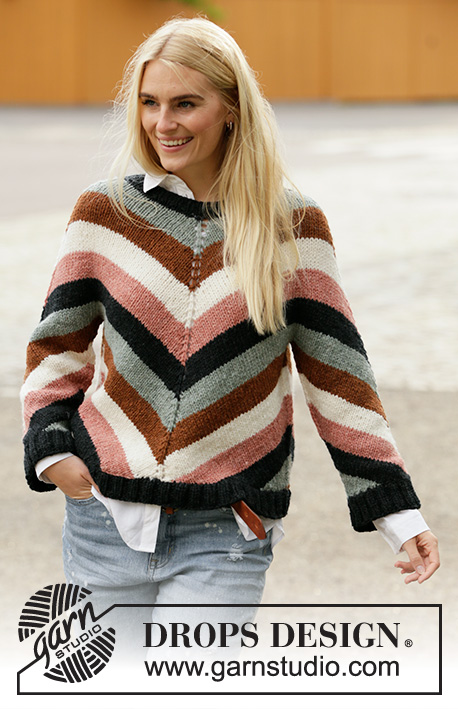 |
||||||||||||
Knitted jumper in 2 strands DROPS Sky. The piece is worked top down, at an angle with stripes. Sizes S - XXXL.
DROPS 205-1 |
|||||||||||||
|
------------------------------------------------------- EXPLANATIONS FOR THE PATTERN: ------------------------------------------------------- INCREASE TIP-1 (evenly spaced): To work out how to increase evenly, count the total number of stitches on the needle (e.g. 58 stitches) and divide by the number of increases to be made (e.g. 10) = 5.8. In this example, increase by making 1 yarn over after approx. each 6th stitch. On the next round knit the yarn overs twisted to avoid holes. STRIPES: The stripes are worked in stocking stitch, top down as follows: 4½-4½-4½-5-5-5 cm (= approx. 7-7-7-8-8-8 rounds/rows) with 2 strands light sea green 4½-4½-4½-5-5-5 cm (= approx. 7-7-7-8-8-8 rounds/rows) with 2 strands hazelnut 4½-4½-4½-5-5-5 cm (= approx. 7-7-7-8-8-8 rounds/rows) with 2 strands white 4½-4½-4½-5-5-5 cm (= approx. 7-7-7-8-8-8 rounds/rows) with 2 strands brick 4½-4½-4½-5-5-5 cm (= approx. 7-7-7-8-8-8 rounds/rows) with 2 strands black Repeat these 5 stripes to finished length. INCREASE TIP-2 (for mid front/back + shoulders): Work to the stitch with the marker, make 1 yarn over, knit 1 (marker in this stitch), 1 yarn over. Then work the new stitches in stocking stitch (= holes). Increase a total of 8 stitches on each increase-round. DECREASE TIP-1 (for sides of body and sleeves): Work until there are 2 stitches left before the stitch with the marker, knit 2 together, knit 1 (marker in this stitch), slip 1 stitch as if to knit, knit 1 and pass the slipped stitch over the knitted stitch. CASTING OFF TIP: To avoid the cast-off edge being tight you can cast off with a ½-size larger needle. PATTERN: See diagrams A.1 and A.2. The illustrations show how to work the pieces back and forth. ------------------------------------------------------- START THE PIECE HERE: ------------------------------------------------------- JUMPER – SHORT OVERVIEW OF THE PIECE: The neck and yoke are worked in the round with circular needle, top down. The yoke is divided for body and sleeves and the body continued in the round. Then the piece is divided mid front/back and continued in 2 sections back and forth, finishing by working rib in the round. The sleeves are worked in the round with short circular needle/double pointed needles, top down. Then they are divided mid top/underneath and finished working back and forth in one section (= underside of sleeve). The rib is worked in the round to finish. NECK: Cast on 58-60-62-64-68-72 stitches with circular needle size 6 mm and 2 strands black. Knit 1 round then work rib (= knit 1/ purl 1) for 3 cm. Change to circular needle size 7 mm and knit 1 round where you increase 10-8-14-12-16-12 evenly spaced – read INCREASE TIP-1 = 68-68-76-76-84-84 stitches. THE PIECE IS NOW MEASURED FROM HERE! YOKE: The next round is worked as follows at the same time as inserting 4 markers (allow the markers to follow your work onwards; they will be used when increasing): Knit 1 and insert the first marker in this stitch (= mid top of shoulder), knit 16-16-18-18-20-20 stitches, knit 1 and insert the second marker in this stitch (= mid back), knit 16-16-18-18-20-20 , knit 1 and insert the third marker in this stitch (= mid top of shoulder), knit 16-16-18-18-20-20, knit 1 and insert the fourth marker in this stitch (= mid front), knit the remaining16-16-18-18-20-20 stitches. Continue with stocking stitch and STRIPES – read description above, AT THE SAME TIME on the first round increase by all markers – read INCREASE TIP-2. Continue increasing every 2nd round a total of 22-24-26-28-29-32 times on each side of all 4 markers. REMEMBER THE KNITTING TENSION! After the last increase there are 244-260-284-300-316-340 stitches on the needle (= 60-64-70-74-78-84 stitches between each stitch with a marker). The piece measures approx. 29-32-35-37-39-43 cm measured in the knitting direction from after the neck. Cut the strand. The next round is worked as follows: Place the first 25-25-29-31-31-31 stitches on 1 thread for half the sleeve, cast on 3-3-4-4-5-5 new stitches on the needle (= in side under sleeve), work the next 73-81-85-89-97-109 stitches (= back piece), place the next 49-49-57-61-61-61 stitches on 1 thread for sleeve, cast on 5-5-7-7-9-9 new stitches on the needle (= in side under sleeve), work the next 73-81-85-89-97-109 stitches (= front piece), place the remaining 24-24-28-30-30-30 stitches on the first thread for the sleeve and cast on 2-2-3-3-4-4 new stitches on the needle (= in side under sleeve). Insert 1 marker in the middle stitch on each shoulder and 1 marker in the middle stitch mid-front. Leave the markers where they are – THE PIECE IS NOW MEASURED FROM HERE! BODY: = 156-172-184-192-212-236 stitches. Insert 1 marker in the first stitch on the round and 1 marker in the 3rd-3rd-4th-4th-5th-5th stitch of the 5-5-7-7-9-9 stitches cast on under the other sleeve; allow these markers to follow your work onwards (= sides). Continue with stocking stitch, stripes, increases mid back and front as before and, AT THE SAME TIME decrease 2 stitches by each of the 2 new markers in the sides – read DECREASE TIP-1. Decrease like this every 4th row to finished length. Work until the piece measures 13-13-13-13-11-7 cm mid front measured from the marker from the division (or continue to desired length; there is now approx. 5 cm left to finished length) – adjust so the last round is worked without either increases or decreases. Cut the strand. Place the mid-back-stitch (with the marker) + the stitches as far as the mid-front-stitch (with the marker) on 1 thread (= half back piece + half front piece); these stitches will be worked later. You now have half the front piece and half the back piece on the needle. HALF FRONT/BACK PIECE: See illustration A.1 for this section. Start from the right side and cast off the stitch with the marker mid front/mid back. Continue with stocking stitch, stripes and decreasing in the side – AT THE SAME TIME cast off 2 stitches at the beginning of each row. Continue like this until there are 3 stitches left, cut the strand, pull it through the remaining stitches and fasten well. HALF FRONT/BACK PIECE: Place the stitches from the thread on circular needle size 7 mm and work in the same way as the first half front/back piece. BOTTOM EDGE: Start on one side and knit up 156-168-180-196-216-232 stitches along the whole bottom edge with circular needle size 6 mm and 2 strands black (the number of stitches should be divisible by 4) – knit up inside the cast-off edge so all casting-off is hidden. Work rib (= knit 2/ purl 2) for 5 cm. Cast off with knit over knit and purl over purl – read CASTING OFF TIP. SLEEVE: Place the 49-49-57-61-61-61 stitches from the thread on the one side of the piece on short circular needle size 7 mm and knit up 1 stitch in each of the 5-5-7-7-9-9 stitches cast on under the sleeve = 54-54-64-68-70-70 stitches. Insert 1 marker in the 3rd-3rd-4th-4th-5th-5th stitch in the 5-5-7-7-9-9 stitches under the sleeve and allow the marker to follow your work onwards. Continue with stocking stitch, stripes and increases mid top of sleeve as before, AT THE SAME TIME decrease by the marker under the sleeve – remember DECREASE TIP-1. Decrease like this every 2nd round to finished length. Work until the piece measures approx. 23-21-20-18-14-9 cm mid top of sleeve, measured from the marker from the division (or continue to desired length; there is approx. 5 cm left to finished length) – adjust so the last round is worked without either increases or decreases. Now work back and forth – see illustration A.2 for this section. Start from the right side and cast off the stitch with the marker on top of sleeve. Continue with stocking stitch, stripes and decrease by the marker mid under sleeve – AT THE SAME TIME cast off 2 stitches at the beginning of each row. Continue like this until there are 3 stitches left, cut the strand, pull it through the remaining stitches and fasten well. Work the other sleeve in the same way. CUFF: Start mid under sleeve and knit up approx. 52-56-64-64-68-72 stitches along the whole bottom edge with double pointed needles size 6 mm and 2 strands black (the number of stitches should be divisible by 4) – knit up inside the cast-off edge so all casting-off is hidden. Work rib (= knit 2/ purl 2) for 5 cm. Cast off with knit over knit and purl over purl. |
|||||||||||||
Diagram explanations |
|||||||||||||
|
|||||||||||||
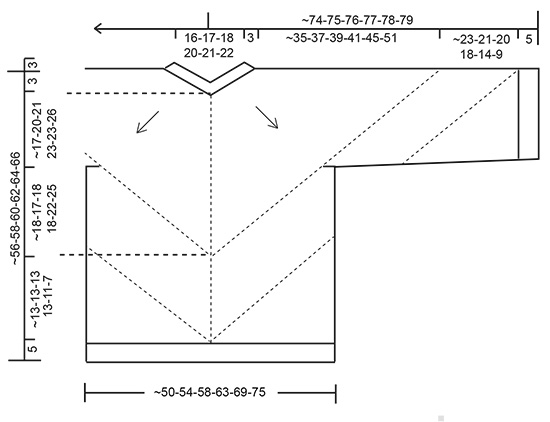 |
|||||||||||||
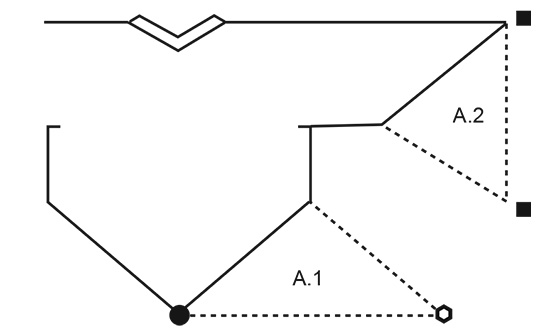 |
|||||||||||||
Have you finished this pattern?Tag your pictures with #dropspattern #pasttopresentsweater or submit them to the #dropsfan gallery. Do you need help with this pattern?You'll find 24 tutorial videos, a Comments/Questions area and more by visiting the pattern on garnstudio.com. © 1982-2025 DROPS Design A/S. We reserve all rights. This document, including all its sub-sections, has copyrights. Read more about what you can do with our patterns at the bottom of each pattern on our site. |
|||||||||||||







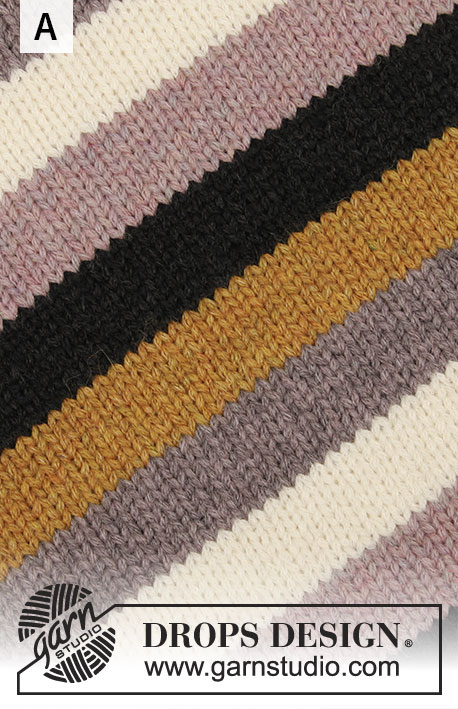
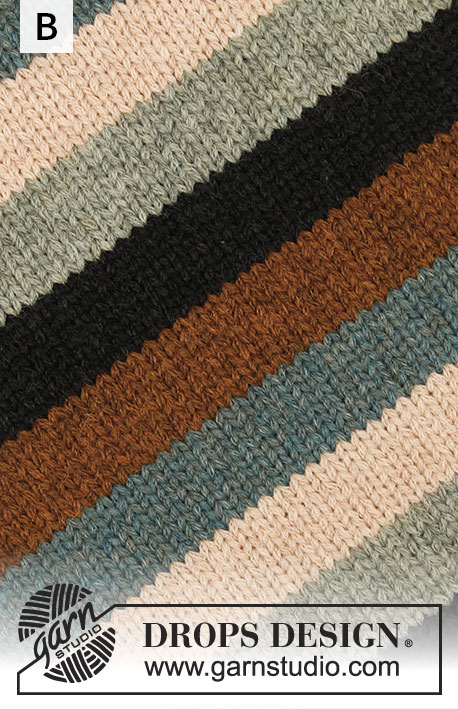
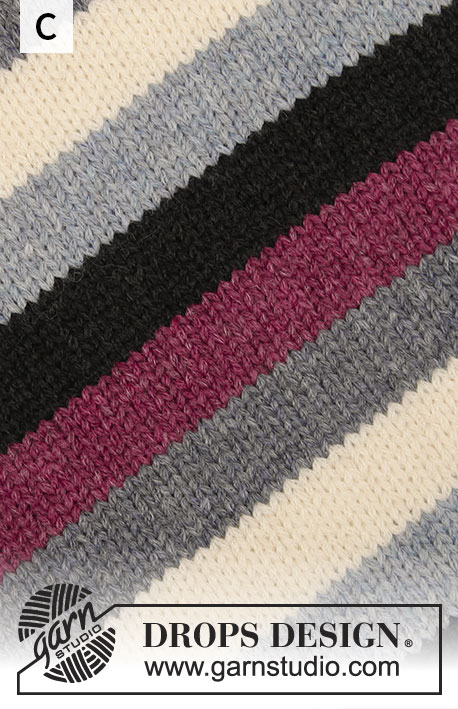
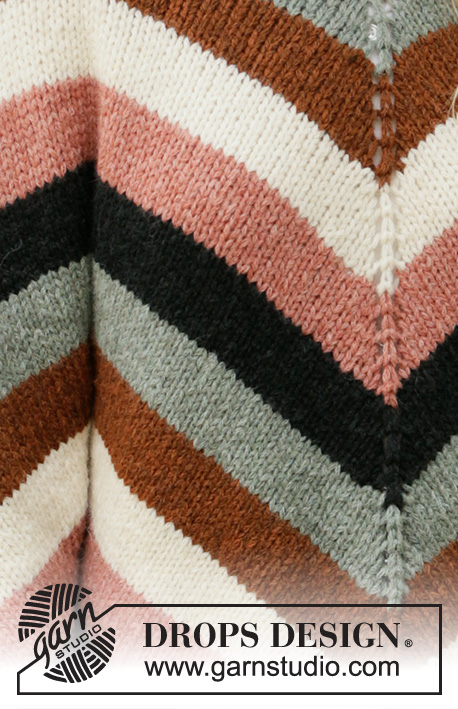


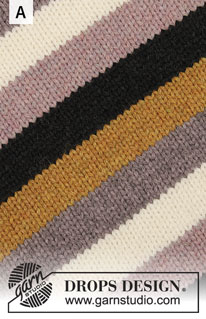
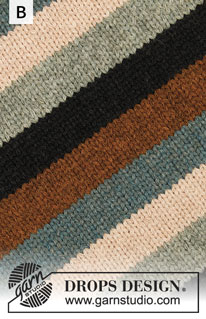










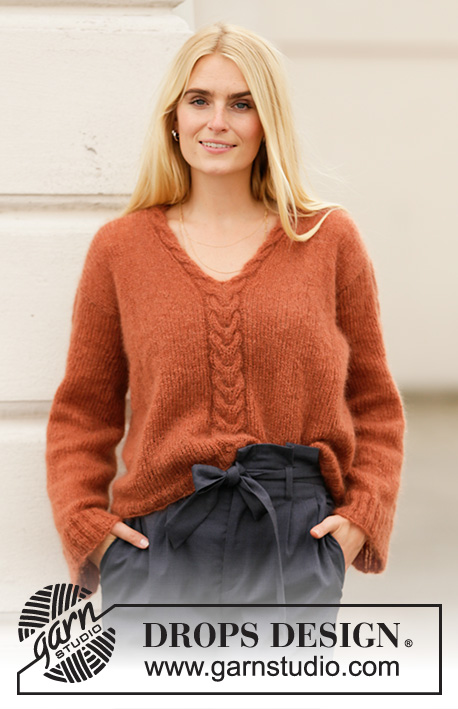
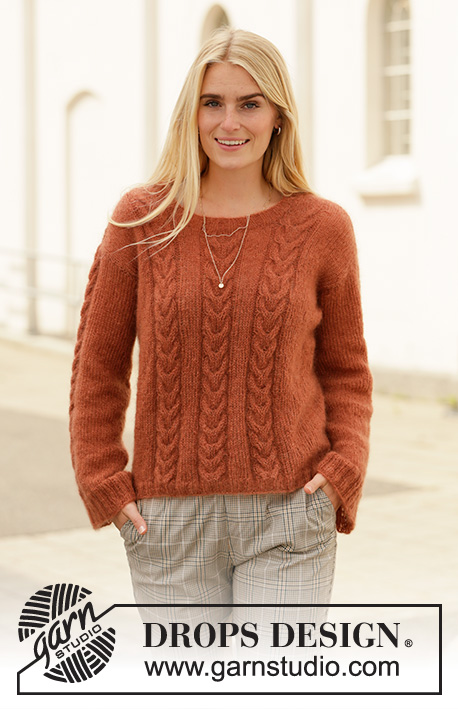
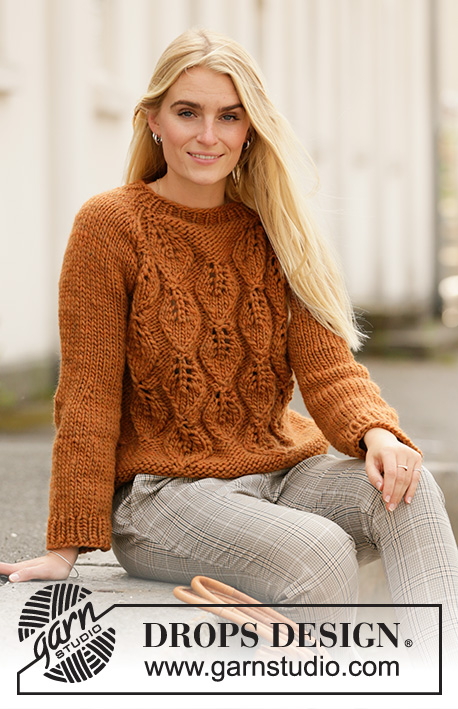



























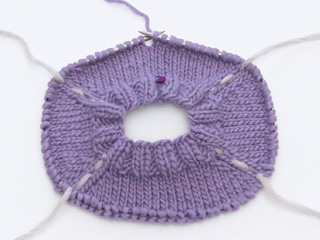











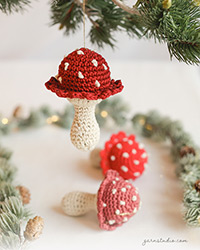
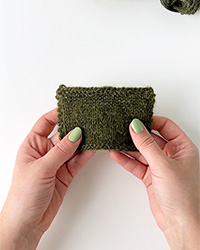
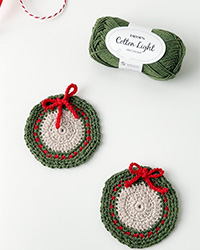
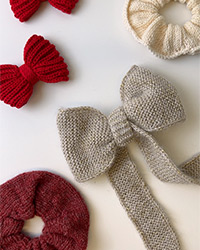
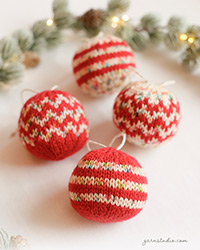
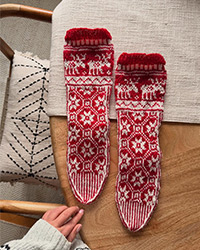
Post a comment to pattern DROPS 205-1
We would love to hear what you have to say about this pattern!
If you want to leave a question, please make sure you select the correct category in the form below, to speed up the answering process. Required fields are marked *.